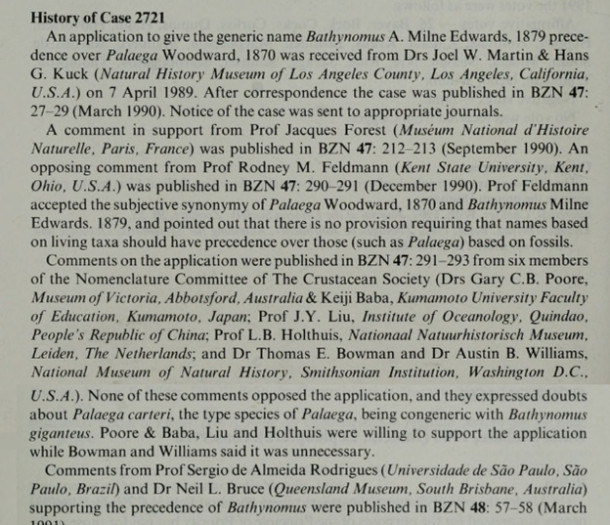The deep sea isopods are a very charismatic and well-known bunch of crustaceans. Not everybody has an in-depth knowledge of em, but those that do call it Bathynomus and have since 1879, but that was potentially subject to change at one point.
In January of 1989 Robert Wieder and Rodney Feldmann described a fossil giant isopod from Washington, under the genus Palaega. Palaega was established in 1870, and has been applied to fossil isopods spanning as far back as the Triassic. The specimen described, part of Palaega, was so similar to extant Bathynomus that it was argued that the two genera should be synonymized. There is a historical precedent for this idea – papers in 1935, 1953, and 1980 all noted great similarity between the two, but they all refrained from synonymizing since the fossils they were describing were not always complete.
Word was sent to the ICZN a few months later, and the issue was discussed for roughly three years.

Bathynomus is still used to refer to the extant giant isopods, and Palaega to the fossil ones; several new species have been named since this debacle started


No comments:
Post a Comment